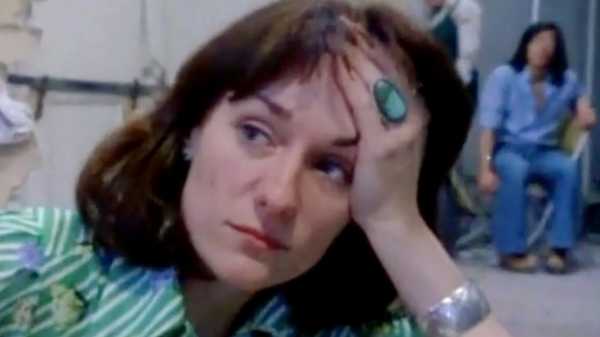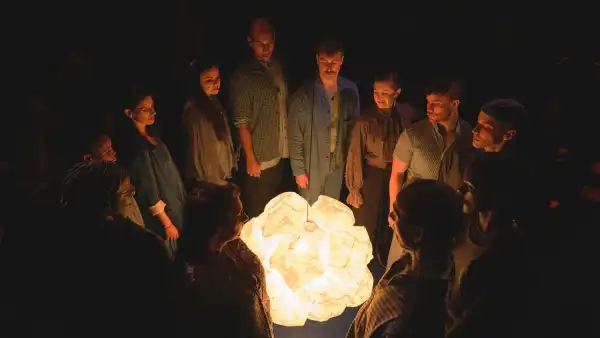
There’s a misguided distinction made between movies of political importance and ones of aesthetic merit. In fact, the best political movies are also artistically innovative, because their innovations reflect the place of the filmmaker and the viewer, and of image-making and viewing, in society at large. That’s what the director Martha Coolidge’s courageous and innovative 1976 movie, “Not a Pretty Picture,” playing this Saturday, June 9th, and next Saturday, June 16th, in Anthology Film Archives’ series “Documentarists for a Day” (it’s also available streaming), does. Its blend of documentary and dramatic filmmaking, of first-person reflection and reënactment, sets a standard for cinematic inquiry into the political implications of personal experience.
Coolidge made “Not a Pretty Picture” at the age of twenty-eight and a half, as she says in the course of the film; it’s her first dramatic feature (she was an experienced documentary filmmaker), though it’s also a blend of documentary and fiction—and that very blend is depicted in the movie. A title card states the film’s subject: at the age of sixteen, in 1962, Coolidge, a prep-school student, was raped, by a young man with whom she went to a party. In “Not a Pretty Picture,” Coolidge dramatizes events in school and en route to the party, the attack itself, and events back in school afterward. But there is an added personal and artistic dimension to the dramatization: the young actress playing Coolidge, Michele Manenti, was also raped, as a title card states and as she herself says in the course of the film.
In making the movie, Coolidge films her discussions with Manenti about their individual experiences, and about the possibility of staging a dramatic scene that reënacts them. Jim Carrington, the actor who plays the rapist (a twenty-one-year-old man nicknamed Curly), also talks with Coolidge on camera about his feelings and approach to the role—and discusses her experiences with her, too. The actors’ and director’s onscreen conversations establish the movie’s deeply intimate but wide-ranging framework from the start, including Manenti’s sense that she agreed to participate in the film because she had mentally blocked her own experience and sought to recover it.
The dramatic scenes of life in prep school—of Martha in her dormitory, talking about sex, boys, and parties with her roommate Anne (Anne Mundstuk, Coolidge’s own longtime friend)—reveal both the open force of adolescent desire and the era’s concealed truths about its practicalities. It’s with a triumphant air of precocious maturity and bold but secure adventure that Martha plans to head to New York for a party among sophisticates. But the reality of that sophistication soon proves crude and dismaying. Five young people are in a car driven by the twenty-one-year-old Curly. Everyone’s drinking; a boy and a girl are making out in the back seat; and Curly, the most falsely sophisticated of the bunch, makes a series of racist remarks and crude observations about women. (As he makes these remarks, Martha—long before their arrival at the party—already looks worried.)
The party turns out to be just a hangout in a borrowed apartment. At the set for the scene—conspicuously a set in a studio—Coolidge brings the cast together and plans out the action, eliciting Manenti’s input based on her own experiences on the night that she was raped. As the reënactments unfold, Martha, Curly, and their friends carouse and josh—but Curly also demands that Martha kiss him, and then coaxes her into a separate room, where she admits to feeling uneasy. The dramatic action is punctuated by discussions between Coolidge, Manenti, and Carrington. There’s an archeology of mores that arises throughout “Not a Pretty Picture,” as when Manenti and Coolidge both acknowledge the instilled belief in their own responsibility, their own blame, for the rapes they they endured. Carrington discusses his observations of young men and his awareness of the prevalence of date rape (which he calls “adolescent rape”); he doesn’t justify it, he’s clear that “technically a woman was raped,” but he also is aware that the rapists don’t think of it that way: “That’s rape, but not in his mind’s eye,” Carrington says.
Carrington has trouble enacting the violence that the scene requires. But Coolidge, with Manenti’s consent, encourages him to overcome his own resistance and perform the rape scene authentically. The two actors and Coolidge negotiate the terms of the scene, which, as it’s staged, seems to arise from within those discussions. When the rape is performed (there’s no nudity, no actual sexual relation depicted), Coolidge captures Manenti’s horrified expressions, her silent, open-mouthed screams of terror, which evoke an absolute limit of experience—which stand for all that can’t be shown, expressed, described, or perhaps even, until that moment, remembered. Coolidge brings these scenes back to the source, her own memory, as, during the scene of simulated rape, the camera pans to her and shows her, in closeup, observing the reënactment of her own experience of rape. Manenti, for her part, describes her passive, destructive negativity immediately after she was attacked: “He already stole my life force; I just felt like I was the living dead.”
The layers of experience embedded in the movie are extraordinarily varied and complex. The psychodramatic reconstruction of Manenti’s own experience, her recovery of submerged memories through her performance, converges with her empathetic effort to embody Coolidge’s experience as well. Coolidge is observing a version of her own abuse and Manenti’s simultaneously. But Coolidge is also using the screen as a sort of mirror for viewers’ own responses to the events onscreen. Spectators of the scene of simulated rape are also spectators of Coolidge’s observation of it and find themselves in her situation—as passive, frozen observers of that appalling event, ones whose experiences, ideas, and perspectives are similarly, suddenly forced into light and challenged.
“Not a Pretty Picture” further expands the moral and social background to Coolidge’s ordeal in subsequent scenes of Martha back at school—Martha fears that she may be pregnant, and she is grotesquely slut-shamed by boys and girls alike, owing to a campaign of whispers about what happened at the party. Coolidge films those scenes in the Hollywood genre styles of teen movies, melodramas, horror films, even musicals. Her sardonic winks at the classics of her youth suggest the distortion and falsification of women’s experiences, of sex, of rape and its recognition, that was prevalent throughout the entertainment industry and the media of the time. Her appropriation of their styles suggests her own corrective.
Sourse: newyorker.com






